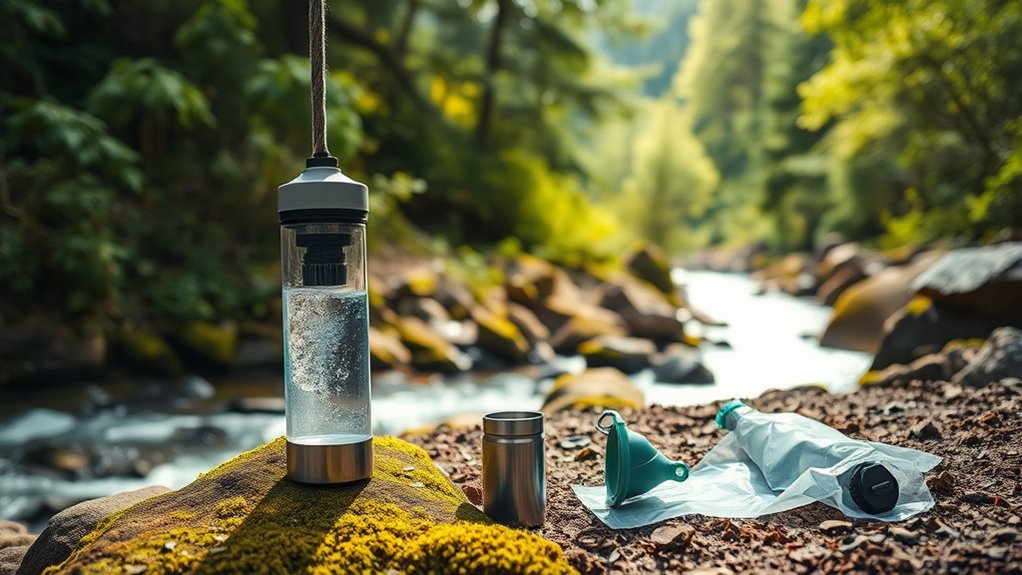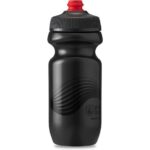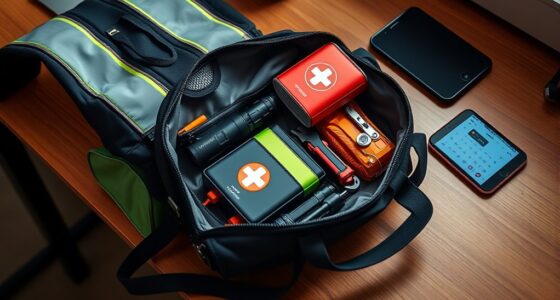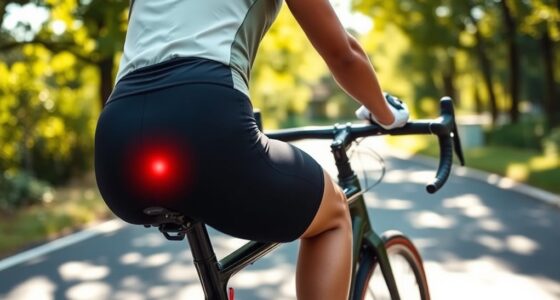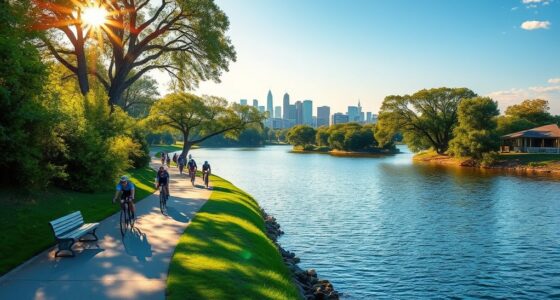When choosing water filtration options on the road, consider lightweight devices like the Sawyer Squeeze or Lifestraw Peak Squeeze for solo trips, which effectively filter bacteria and protozoa. For groups, use gravity systems like the Platypus GravityWorks or high-capacity purifiers such as the MSR Guardian. Chemical tablets and UV purifiers offer quick emergency solutions. Paying attention to pore size, capacity, and maintenance guarantees safe drinking water anytime. Keep exploring to find the best solution for your travel needs.
Key Takeaways
- Portable filters like Sawyer Squeeze and Lifestraw Peak Squeeze are lightweight options for individual use on the go.
- Gravity systems such as Platypus GravityWorks provide high-capacity treatment for groups or base camps.
- Chemical disinfectants and water purification tablets are practical for quick, emergency water treatment.
- UV sterilizers like SteriPEN Ultra quickly eliminate microorganisms but require batteries and pre-filtered water.
- Consider filter pore size, capacity, flow rate, and maintenance needs when selecting the best water filtration option for travel.
Portable Water Filters for Solo Travelers

When you’re traveling solo, having a reliable portable water filter is essential for staying safe and hydrated. Portable water filters, like filter bottles and advanced filtration systems, guarantee you get clean water wherever you go. Devices such as the Sawyer Squeeze and Lifestraw Peak Squeeze weigh just around 3.8 oz, making them easy to carry. They effectively remove bacteria, protozoa, and microplastics, providing you with safe water during long hikes or emergencies. The Katadyn BeFree offers fast flow rates and a lifespan of 4,000 liters, while the Grayl GeoPress filters viruses, bacteria, and protozoa, perfect for quick water purification on the move. For emergency use, Potable Aqua tablets are lightweight and cost-effective. These options guarantee you have reliable water, no matter where your adventures take you, especially as portable water filtration continues to evolve with innovative designs. Additionally, understanding the signs of spoilage in stored water can help prevent consuming contaminated sources during your travels. Recognizing contaminated water early can save you from potential health issues during your journey.
Group and Base Camp Water Treatment Solutions

For group and base camp settings, efficient water treatment requires reliable systems capable of handling larger volumes and multiple users. A good choice is a water filter system designed for group water treatment, such as gravity filtration setups like the Platypus GravityWorks with a 4-liter capacity. These large volume water filters provide high flow filtration, making it easy to treat water for several people simultaneously. The MSR Guardian Purifier offers long-lasting, virus-capable water purification, perfect for extended stays. For rapid large-scale filtering, the MSR AutoFlow XL handles high volumes quickly. Reusable water bottles paired with these systems enhance convenience, while maintaining filtration capacity. These solutions ensure safe, clean water for your entire group at the base camp, simplifying water management and reducing the need for constant refills. Incorporating effective filtration methods can further improve water safety and quality during your outdoor adventures. Emphasizing user-friendly operation is essential for busy group settings, ensuring everyone can easily access clean water without delays. Additionally, selecting systems with easy maintenance reduces downtime and keeps your water supply reliable throughout your trip. Employing real-time monitoring systems can help detect any issues promptly, maintaining water safety standards. Utilizing multi-stage filtration can enhance the removal of contaminants, providing an extra layer of safety for your water supply.
Chemical and Emergency Water Purification Methods

Chemical and emergency water purification methods offer practical alternatives when traditional filtering systems aren’t available or practical. Chemical treatment, like water purification tablets or chemical disinfectants, can quickly make water safe by killing bacteria, protozoa, and viruses. However, they may leave a chemical taste and don’t filter particulates, so pre-filtering is recommended. Emergency purification includes boiling water, which effectively kills pathogens but requires fuel and time. UV sterilization devices, such as SteriPEN Ultra, destroy microorganisms in seconds but need batteries and pre-filtered water for best results. These methods are ideal for obtaining potable water in a pinch, especially when traditional filters aren’t accessible. Additionally, using vetted home theatre projectors can enhance your outdoor viewing experience during camping trips. Understanding water safety and proper treatment techniques is crucial to avoid illness, especially when relying on chemical purification methods in remote settings.
Key Features to Consider When Choosing a Water Filter
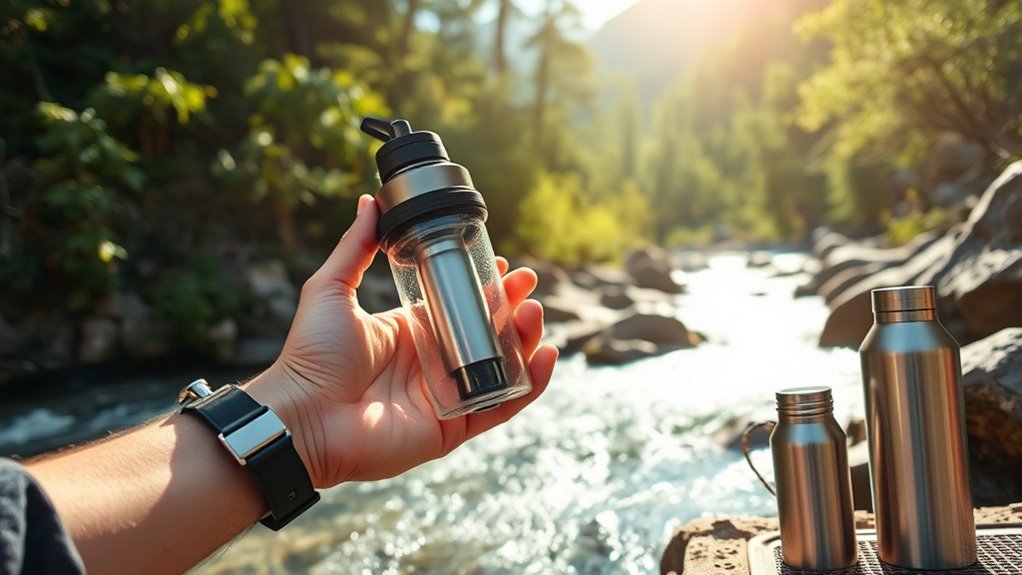
Choosing the right water filter involves evaluating several key features to guarantee it meets your needs. First, consider pore size; filters like the LifeStraw Peak Squeeze with 0.2 microns effectively remove bacteria, protozoa, and microplastics. Second, examine filtration technology—multi-stage systems like reverse osmosis or activated carbon provide all-encompassing purification by targeting contaminants and chemicals. Third, look at capacity and lifespan; options like Katadyn’s 4,000 liters or Grayl’s 150 liters ensure durability for your trip. Fourth, prioritize weight and flow rate; lightweight models like the Sawyer Micro Squeeze and filters with rapid treatment times (e.g., 0.6 L/min) offer quick, efficient water access on the go. Additionally, understanding the benefits of raw food can inspire you to choose water sources that support a healthy lifestyle while traveling. Incorporating knowledge about air quality of your environment can impact your overall health, especially when relying on water sources exposed to pollution. It’s also beneficial to be aware of water treatment innovations, which continuously improve filtration effectiveness and convenience for travelers. To maximize effectiveness, it’s also important to consider the sound vibrations and their effects on health can motivate you to select water sources that promote overall well-being during your travels.
Maintaining and Using Your Water Filtration System
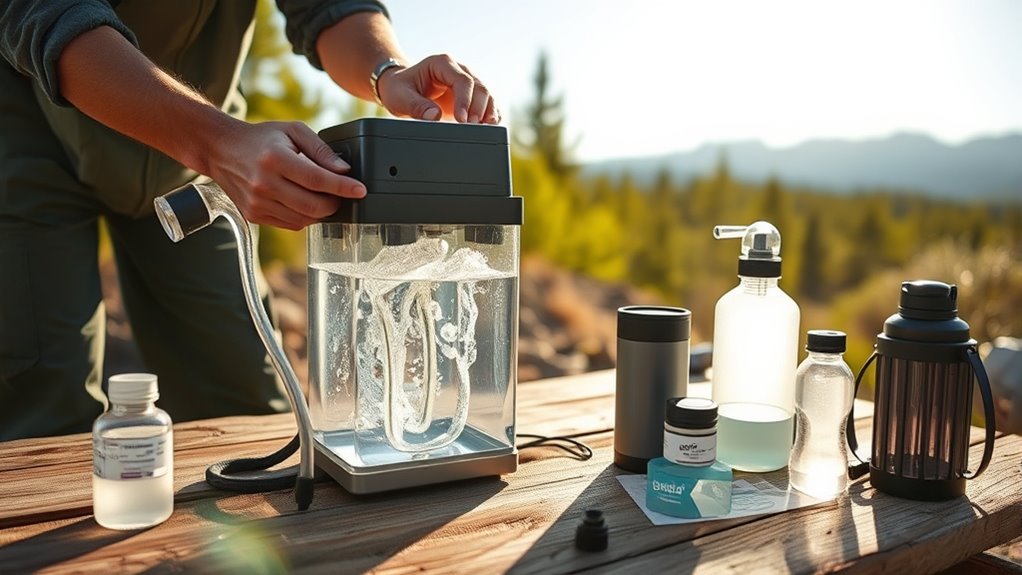
Proper maintenance and correct usage are essential to keep your water filtration system functioning effectively during your adventures. Regularly clean and backflush your filter, following the manufacturer’s instructions, to maintain maximum flow and contaminant removal. Replace filter cartridges or microfilters when they reach their capacity, usually after filtering 1,000 to 4,000 liters, to stay protected against bacteria, protozoa, and viruses. Use pre-filters or sediment screens when collecting water from muddy sources to prevent clogging and extend filter life. Disinfect your system periodically by flushing with boiling water or a mild bleach solution, if recommended. When not in use, store your filter in a dry, cool place, and check seals and O-rings for wear or damage to ensure a proper fit and safe operation. Additionally, understanding water filtration options on the road can help you select the best system for your needs. Knowing the different types of filters available can also help you optimize your setup for various water conditions. Incorporating regular filter maintenance routines will further extend the lifespan and effectiveness of your filtration system. Remember that performance cookies can help monitor and improve your experience with your filtration setup over time.
Frequently Asked Questions
What Is the Best Water Filter for Traveling?
When choosing the best water filter for traveling, consider your needs. If you want quick, reliable purification, a device like the Grayl GeoPress or UltraPress is ideal. For lightweight, chemical-free filtration, options like the Sawyer Squeeze or Katadyn BeFree are great choices. If you’re okay with chemical tablets, Potable Aqua Purification Tablets work well. Pick based on your activity level, water sources, and whether you prefer speed, weight savings, or chemical-free solutions.
What Is the Most Effective Water Filtration Method?
When considering the most effective water filtration method, reverse osmosis stands out as the top choice. It removes over 99% of contaminants, including viruses, bacteria, chemicals, and radionuclides. UV purification is great for inactivating pathogens but doesn’t eliminate chemicals. Combining filters, like a microfilter with chemical or UV treatment, provides thorough protection. Your best option depends on your water source and contaminants, but reverse osmosis offers the highest overall effectiveness.
What Water Filter Do Thru Hikers Use?
Thru-hikers typically use lightweight squeeze filters like the Sawyer Squeeze or Katadyn BeFree because they’re fast, easy to use, and light. Many prefer the LifeStraw Peak Squeeze for its durability and effective removal of bacteria, protozoa, and microplastics. Some carry the Grayl GeoPress for quick, no-fuss filtration that also removes viruses, while others keep chemical tablets as backups. You’ll want a filter that’s lightweight, reliable, and efficient for long hikes.
How to Filter Water in the Woods?
So, you’re wondering how to filter water in the woods—because, of course, drinking directly from that muddy stream sounds like a delightful adventure, right? Grab a portable microfilter like the Sawyer Squeeze or Katadyn BeFree; they’re quick and effective. Pre-filter debris, then use your filter to remove bacteria and protozoa. For viruses, add a UV purifier or chemical treatment. Stay safe, and enjoy your wilderness sip!
Conclusion
Choosing the right water filtration option guarantees you stay safe and hydrated on your adventures. While some believe chemical treatments are outdated, recent studies show they’re still effective in emergency situations. By understanding your needs and maintaining your system properly, you can confidently explore new places without worry. Remember, staying informed and prepared is the key to enjoying your journey—because safe water isn’t just a convenience, it’s essential for a successful trip.
